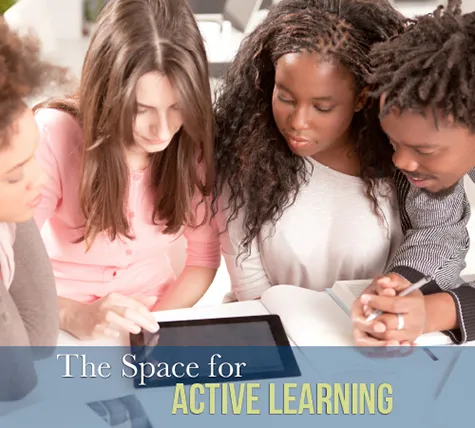Active Learning

What is Active Learning?
In active learning, the responsibility for learning lies with the learner, not with the teacher. Active learning can be defined as any or all of the below, according to Michael (2006):
- the process of having students engage in some activity that forces them to reflect upon ideas and how they are using those ideas;
- requiring students to regularly assess their degree of understanding and skill at handling concepts or problems;
- the attainment of knowledge by participating and contributing;
- the process of keeping students mentally, and often physically, active in their learning through activities that involve them in gathering information, thinking, and problem-solving.
These definitions highlight the overarching principle of Student-centered instruction, in which "students influence the content, activities, materials, and pace of learning" (Michael, 2006). As opposed to placing the responsibility with the instructor, learning is now the responsibility of the learner. However, the instructor still guides the learning process through the design of activities, and management of course and classroom. The attention is drawn away from the sage on the stage and focused on the students.
Often, collaborative, cooperative learning is a part of active learning strategies, meaning that students work together in groups to achieve a shared goal (i.e., not in competition with each other; Johnson et al., 1991).
Active Learning Resources
Resources
Training Faculty for Active Learning, Campus Technology:
Campus Technology, July 2014.pdf (July 2014)
Transformers: Building an Active Learning Faculty:
http://campustechnology.com/articles/2014/05/21/transformers-building-an-active-learning-faculty.aspx (May 2014)
55% More STEM Students Fail Lectures Than Active Learning Classes:
http://campustechnology.com/Articles/2014/05/14/55-More-STEM-Students-Fail-Lectures-Than-Courses-with-Active-Learning.aspx?Page=1, referenced source: http://www.pnas.org/content/early/2014/05/08/1319030111.full.pdf+html?sid=8c66e8e4-8eea-4989-b252-fab804e80328 (May 2014)
McGill Active Learning Classrooms:
http://www.mcgill.ca/tls/spaces/alc
University of Washington Active Learning Classrooms:
https://www.lib.washington.edu/ougl/learning-spaces/active-learning-classrooms
University of Minnesota Active Learning Classrooms:
http://www.classroom.umn.edu/projects/ALCOverview.html
Selected journal articles by relevance
Michael, 2006. Where's the evidence that active learning works?
http://www4.ncsu.edu/unity/lockers/users/f/felder/public/Papers/Prince_AL.pdf
Johnson, Johnson, & Smith, 1991. Cooperative Learning: Increasing College Faculty Instructional Productivity (Book).
http://files.eric.ed.gov/fulltext/ED343465.pdf
